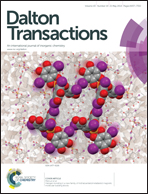Highly-effective photocatalytic properties and interfacial transfer efficiencies of charge carriers for the novel Ag2CO3/AgX heterojunctions achieved by surface modification†
Abstract
Novel Ag2CO3/AgX heterojunctions are achieved from the surface modification of Ag2CO3 with AgX (X = Cl, Br and I) nanoparticles by a facile and efficient ion-exchange method, which distinctly enhances the degradation activity for typical RhB, MB, and MO dyes compared with Ag2CO3. The formation of the heterostructure is evidenced by XRD, SEM, EDS, XPS and UV-vis DRS analyses, which indicates the bonding interaction between Ag2CO3 and AgX reduces the potential transfer barrier of charge carriers on their interface and extends visible light harvesting at 480–640 nm. Photocurrent responses and PL spectra demonstrate the Ag2CO3/AgX heterojunctions can effectively separate electron–hole pairs and suppress their recombination. The dye sensitization effect indicates that the effective electronic injection from RhB to the heterojunction is in favor of improving the photocatalytic ability. The possible transferred and separated behavior of electron–hole pairs and photocatalytic mechanisms are illustrated in detail.


 Please wait while we load your content...
Please wait while we load your content...